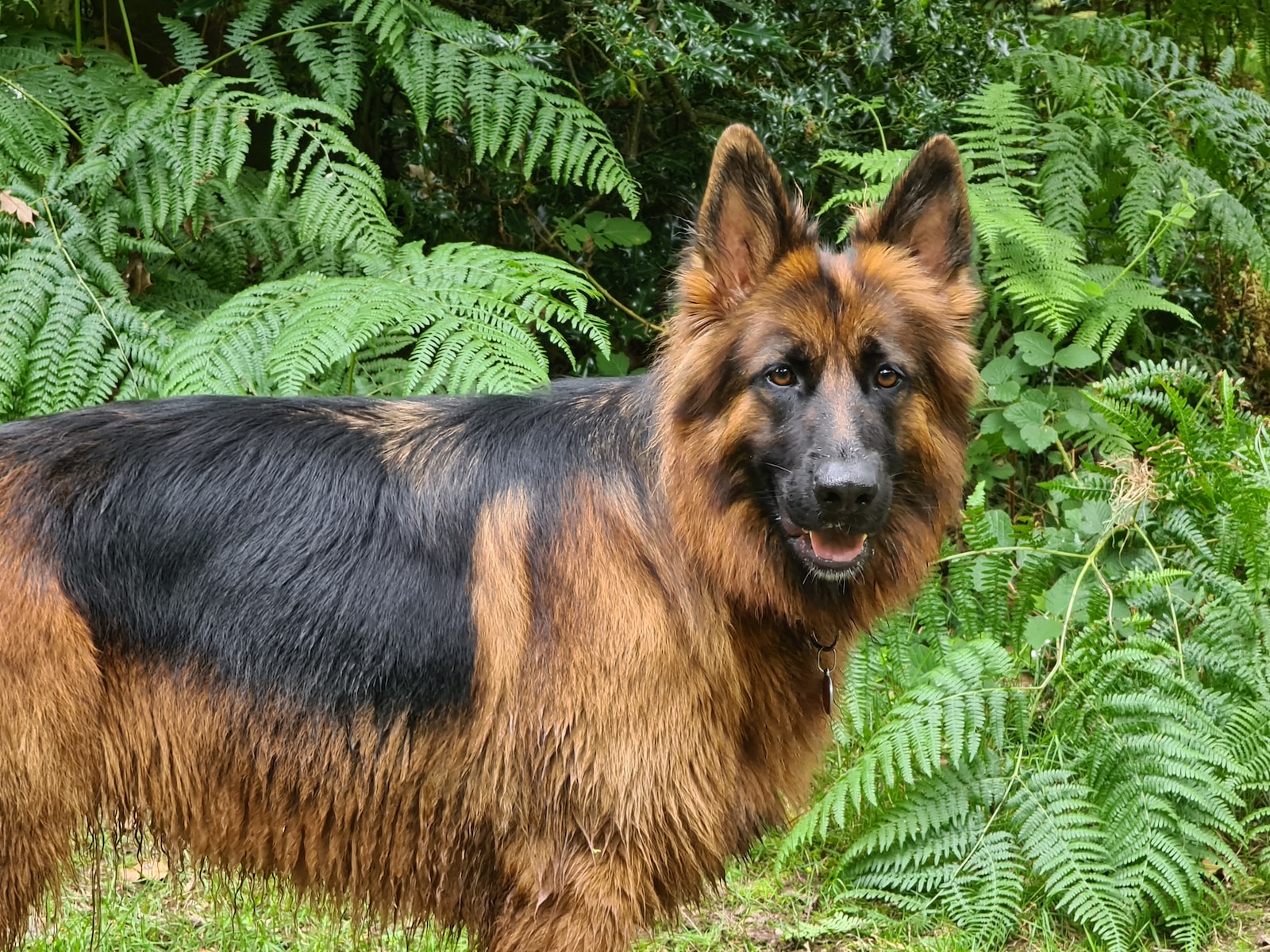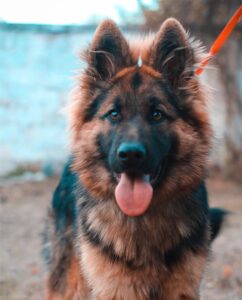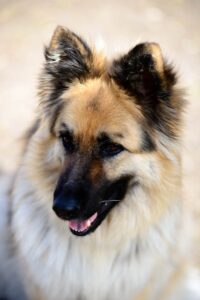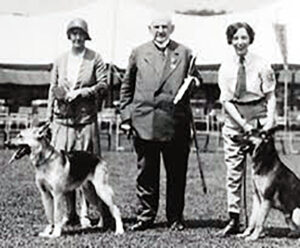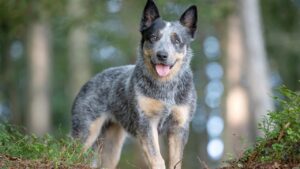Long haired German Shepherd: Characteristics, Care and Everything You Need to Know
The long haired German Shepherd is a beautiful, loyal dog that makes a wonderful family pet. This variation of the popular German Shepherd has a longer, lush coat that requires some extra grooming but gives them a very majestic appearance. Read on to learn all about this intelligent, active breed and see if the long haired German Shepherd could be the right dog for you!
Read our Long haired German Shepherd New Owner Checklist and Guiad for a breakdown of all essentials.
Origins of the Long haired German Shepherd
The long haired German Shepherd shares the same origins as the classic German Shepherd breed that originated in Germany in 1899. Occasionally, long haired puppies would appear in German Shepherd litters due to a recessive gene. While originally seen as a fault, a group of breeders decided to selectively breed these long haired dogs to create the Long haired German Shepherd as a separate breed.
Appearance and Coat of the Long haired German Shepherd
The most noticeable difference between longhaired German Shepherds and short-haired is their long, lush coat. Their hair can grow up to 6 inches long, compared to 2 inches on a short-haired German Shepherd. Their hair is slightly wavy or straight, dense, and soft to the touch.
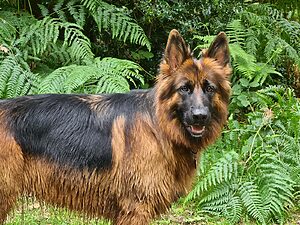
Other than their coat, longhaired German Shepherds share the same characteristics as regular German Shepherds:
- Large in size, ranging from 22-26 inches tall at the shoulder
- Weigh between 50-90 pounds
- Muscular and athletic build
- Erect ears and long muzzle
- Common coat colors – black, black and tan, sable, all black, gray, white
Their long fur can sometimes make them look a bit larger than short-haired German Shepherds.
Temperament of Longhaired German Shepherds
Fortunately, they have the same intelligent, loyal temperament that makes the original German Shepherd such an ideal working dog and family companion. They are:
- Devoted – form very strong bonds with their family
- Courageous – will protect their family and home
- Intelligent – easy to train as they love to learn
- Active – require daily exercise and mental stimulation
- Playful – especially as puppies
Proper socialization is important to prevent any wariness around strangers. But with training, longhaired German Shepherds make wonderful pets!
Grooming Requirements for the Long haired German Shepherd
While short-haired German Shepherds only require occasional brushing, longhaired German Shepherds need more intensive grooming to keep their coat healthy and free of mats:
- Daily brushing – Helps remove dirt, distribute oils, prevent tangles, and remove loose hair. A slicker brush and metal comb work best. For easy grooming consider a:
- Weekly baths – Bathe once a week with a moisturizing made for long haired breeds.
- Monthly deep conditioning treatments.
- Regular nail trimming, ear cleaning, and teeth brushing.
- Professional grooming 2-3 times a year.
Without proper grooming, longhaired German Shepherds are prone to painful mats and tangles. Be prepared to invest 15-20 minutes a day brushing your longhaired shepherd!
Activity Level and Exercise Needs
Longhaired German Shepherds have the same high energy level and need for activity as their shorthaired counterparts. Plan on providing:
- At least 60 minutes of exercise daily -ideally involving activities like jogging, hiking, swimming, playing fetch, or dog sports.
- Mental stimulation – These intelligent dogs need activities like obedience or agility training, interactive toys and games.
- A securely fenced yard – gives them space to run around and play.
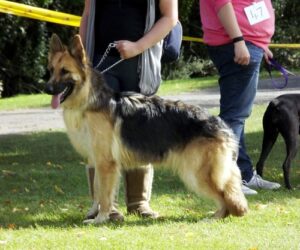
Without enough activity, these energetic, working dogs are prone to destructive behavior and hyperactivity. An exercised longhaired German Shepherd is a happy, calm dog!
Most Common Health Issues
Longhaired German Shepherds are at risk for the same genetic health conditions seen in regular German Shepherds, including:
- Hip dysplasia – malformed hip sockets. Have breeder test for this.
- Allergies and skin problems – may require special dog foods.
- Bloat
- Elbow dysplasia
- Eye conditions like cataracts
Reputable breeders will test breeding dogs for these issues. With proper care, the longhaired German Shepherd has a lifespan of 10-14 years.
Finding a Responsible Long haired German Shepherd Breeder
It’s crucial to find a responsible breeder of longhaired German Shepherds. Avoid backyard breeders or pet stores. Look for breeders who:
- Have experience and good reputation breeding longhaired German Shepherds
- Test all breeding dogs for genetic diseases
- Raise puppies in a loving home environment
- Provide health guarantee for their puppies
Expect to pay $1500 to 3000 for a Long haired German Shepherd puppy from a responsible breeder. Connect with reputable breeders.
Is a Long haired German Shepherd Right for You?
Before getting a longhaired German Shepherd, consider if:
- You have time for daily exercise, training, and grooming.
- You have space for a large, active dog.
- You don’t mind dog hair on your furniture and clothes!
- You can handle a powerful, strong-willed dog.
- You have access to professional training if needed.
If those fit your lifestyle, the devoted, friendly longhaired German Shepherd will make a perfect addition to your family!
Essentials for Owning a Longhaired German Shepherd
Plan your budget to cover these supplies for your dog:
- Quality dog food – Expect to pay $60-$100 per month. Look for brands made for large, active breeds like:
- Grooming tools – Budget $75-150 initially for brushes, combs, clippers, shampoo, etc. Ongoing grooming costs may be $60-100 per appointment.
- Veterinary care – Annual exams, vaccines, and preventatives will likely run $500-1000 per year.
- Training – Puppy and obedience classes range from $100-300.
- Supplies – Leash, collar, crate, toys, treats, etc will be around $200-300 upfront.
Finding Your Perfect Longhaired German Shepherd
The magnificent longhaired German Shepherd is a wonderful companion for active owners who have time to commit to training and grooming. Their loyal, protective nature combined with their intelligence and athleticism makes them excellent working dogs, show dogs, and family pets. We hope this complete guide helps you decide if the longhaired German Shepherd would make the ideal addition to your home!
Training Tips for Longhaired German Shepherds
Longhaired German Shepherds are highly intelligent and trainable, but their independent thinking can make them a challenge. Here are some training tips:
- Start training early and be consistent.
- Use positive reinforcement like praise and treats.
- Attend puppy and obedience classes for socialization.
- Work on basic commands like sit, stay, come, down.
- Crate train to teach good potty habits.
- Do not punish or get angry during training.
- Practice commands during daily walks and play.
- Continue training throughout their lifetime.
Invest time into training your long haired German Shepherd using patience and you’ll have a wonderful companion for life.

Fun Facts About Longhaired German Shepherds
- A longhaired German Shepherd named Gin won Best in Show at the Westminster Dog Show in 1987.
- Despite their long coat, longhaired German Shepherds shed about the same amount as short-haired ones.
- The longhair gene is recessive – two longhaired dogs can only produce longhaired offspring.
- Some longhaired German Shepherds participate in dog sports like agility, obedience, and Schutzhund.
- They make wonderful service dogs, rescue dogs, and therapy dogs.
- Queen Victoria owned a longhaired German Shepherd.
- Longhaired German Shepherds come in a variety of colors like black, black and tan, sable, white, and grey.
With their majestic coats and loyal personalities, it’s no wonder longhaired German Shepherds captivate so many dog lovers!
Frequently Asked Questions
Are long haired German Shepherds rare?
Yes, longhaired German Shepherds are rarer than the short-haired variety, but they are growing in popularity. Only about 2-3% of GSD litters produce longhaired puppies.
Are long haired German Shepherds just as healthy?
Yes, overall the longhaired variation is just as hardy and healthy as short-haired German Shepherds. Reputable breeders will test breeding dogs.
How much exercise does a long haired German Shepherd need?
Plan on providing at least 60 minutes of vigorous exercise every day, along with mental stimulation and free play. These dogs have high energy levels.
What climate is best for a long haired GSD?
Their thick coat makes them adaptable to cooler climates, unlike long haired dogs that do better in warm areas. But they can thrive in most climates.

